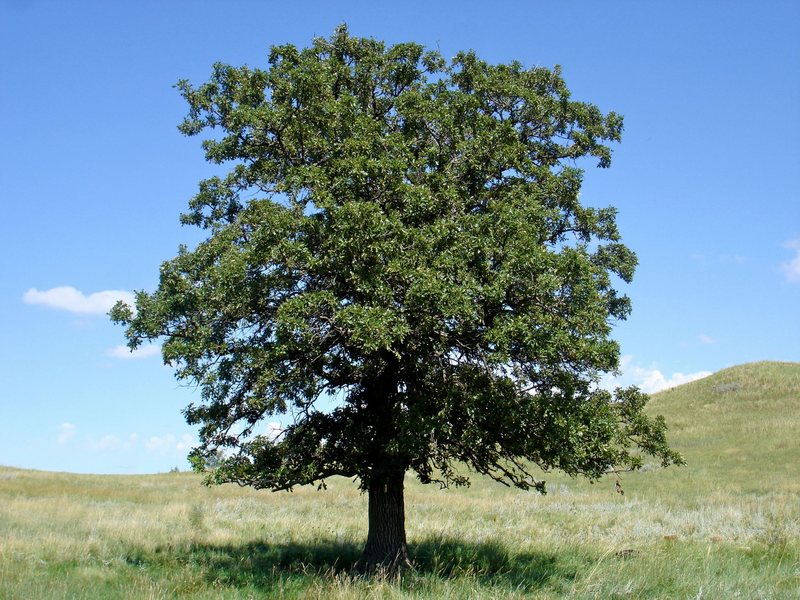Black Oak Tree
Quercus velutina
Click here to download a PDF of this plant information page (for printing).

Sun Exposure: Full Sun, Part Sun
Season of Interest: Summer, Fall
Bloom Time: April, May
Bloom Color: Gold (catkin)
Height: 50 to 100 ft.
Spread: 50 to 80 ft.
Spacing: 55 ft.
Water Needs: Average
Maintenance: Prune for shape when young
Soil Type: Clay, Loam, Sandy
Soil pH: Acidic, Neutral
Soil Drainage: Well drained
Pests: Borers, Galls
Diseases: Oak wilt
Wildlife: Birds, Small mammals

Description:
Black Oak is a medium-sized to large deciduous tree with an irregularly rounded crown. The large leaves, 10 in. long (25 cm), feature 7-9 deeply incised lobes. Glossy dark green above and paler underside, they turn brilliant shades of yellow, orange or red in the fall. Inconspicuous yellow-gold catkins appear in spring before or as the leaves emerge. They give way to solitary or paired elliptic acorns adorned with fringed cups that cover up to 1/2 of the acorn. They are a valuable source of food for small mammals and birds, including squirrels, white-tail deer, mice, voles and turkeys. The young shoots and large terminal buds are covered with a dense, gray pubescence. Deeply furrowed on mature specimens, the tannin-rich, almost black outer bark hides yellow to orange inner bark that produces bright yellow dye. Native to eastern and central North America, Black Oak is extensively planted as an ornamental for its fall color. It also makes an excellent shade or lawn tree for large areas. For more information see:
plants.ces.ncsu.edu/plants/quercus-velutina
Care and Growing Tips:
Black oak trees grow best if they receive 5 to 8 hours of direct sunlight but will tolerate some shade. They prefer soils that are moist, rich, deep, well-drained, and acidic. Ironically, it is most often found in extremely dry sites with average to very poor soils, where it can successfully out compete other trees. It adapts to soils that are neutral or slightly acidic.